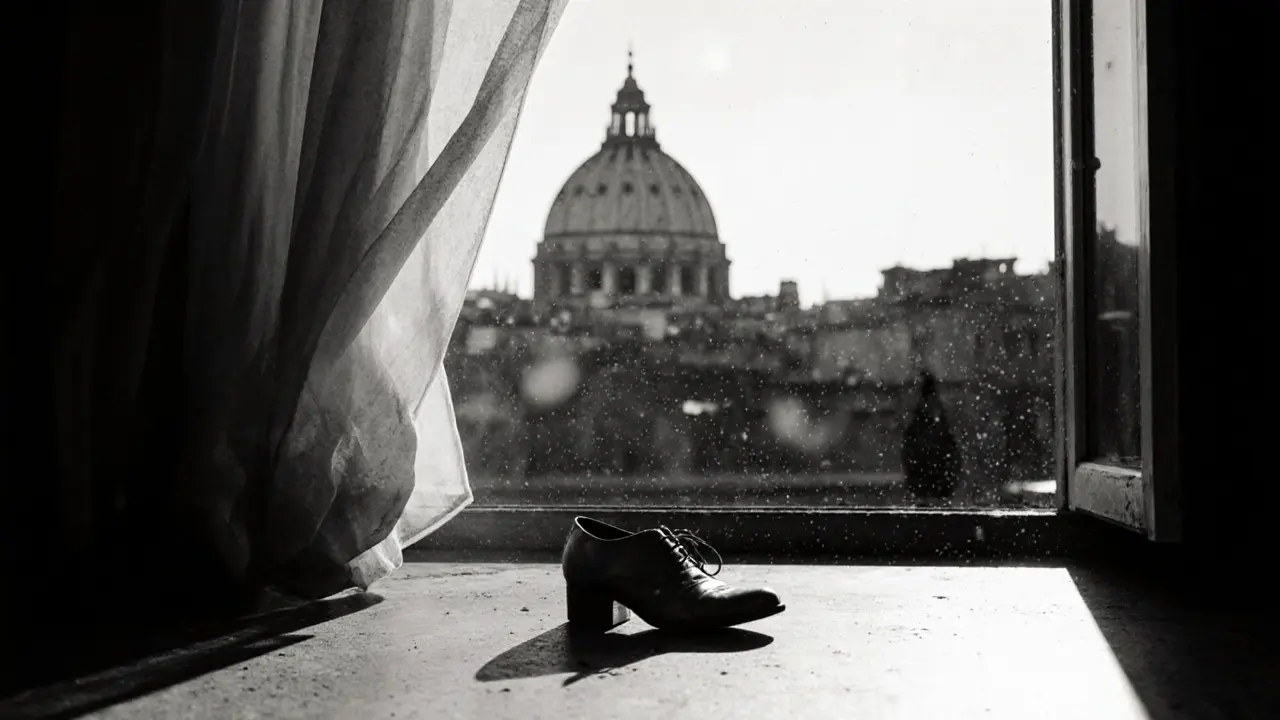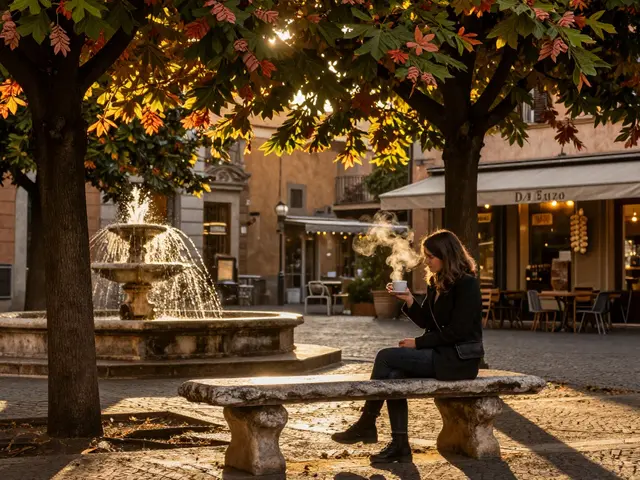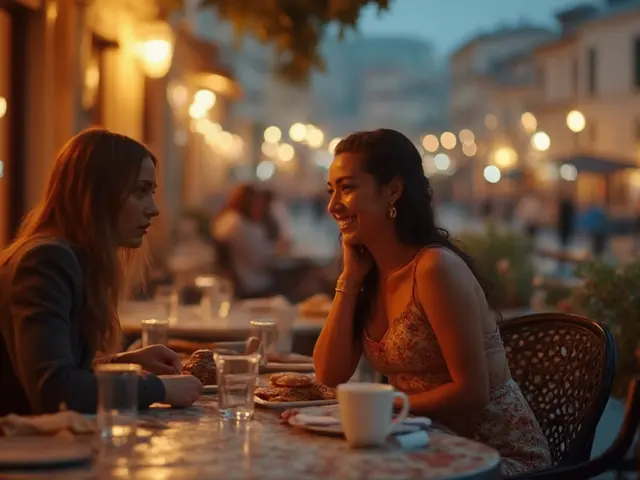Valentina Nappi didn’t just move to Rome-she became part of its rhythm. The city’s narrow alleys, sunlit piazzas, and ancient stone walls weren’t just backdrops for her films; they were the heartbeat of her career. If you’ve ever wondered why so many of her most memorable scenes feel alive, it’s because Rome isn’t just where she worked-it’s where she found her voice.
Rome Wasn’t Just a Location, It Was a Character
Most people think of Rome as the Colosseum, the Vatican, or espresso bars with marble counters. But for Valentina Nappi, Rome was the quiet courtyard behind Trastevere, the flickering streetlamp near Ponte Sisto, the rooftop terrace with a view of the dome of St. Peter’s. These weren’t random filming spots. They were chosen because they felt real. No studio sets. No green screens. Just the city as it is-worn, warm, unpredictable.
Her scenes didn’t rely on over-the-top drama. They worked because they felt intimate. You could hear the distant chime of a bicycle bell. See the way sunlight caught dust motes in an old apartment. That authenticity didn’t happen by accident. It came from knowing the city like a neighbor. She walked its streets before dawn. She knew which baker opened at 5 a.m. and which bar kept the same bartender for twenty years. That kind of familiarity bled into her performances.
From Naples to the Eternal City
Valentina wasn’t born in Rome. She grew up in Naples, where the streets are loud, the food is heavy, and the emotions run even heavier. Moving to Rome at 19 wasn’t about chasing fame-it was about chasing freedom. In Naples, people knew her family. In Rome, she could be whoever she needed to be. The city gave her anonymity, but more than that, it gave her space to grow.
Her first shoots were in small apartments near Termini Station. The crews were tight-knit. The directors didn’t yell. They talked. They asked what she wanted. That’s rare in any industry, but especially in adult film, where pressure often replaces conversation. In Rome, she learned that performance isn’t about doing what’s expected-it’s about showing up as yourself, even when the camera’s rolling.

The Industry That Changed Around Her
When Valentina started, the adult industry in Italy was still mostly DVD-based. Fans bought physical copies from specialty shops in Milan or Bologna. Online platforms were just starting. By the time she became one of the most recognized names in European adult cinema, everything had shifted. Streaming changed the game. Social media turned performers into personal brands.
She adapted without losing her edge. She didn’t chase trends. She didn’t post daily selfies or do viral challenges. Instead, she released short, cinematic clips-filmed in real Roman locations-with no music, no voiceover, just movement and silence. People noticed. They didn’t just watch. They remembered.
Her work stood out because it didn’t feel like pornography. It felt like poetry. A hand brushing against a stone wall. A window left open in a rainstorm. A pair of shoes kicked off on a tiled floor. These weren’t just scenes. They were moments. And Rome, with its layers of history and quiet beauty, made them possible.
Why Rome Still Matters to Her
Even after years in the spotlight, Valentina still lives in Rome. Not in a luxury apartment in EUR or a gated villa outside the city. She’s in a small flat near Campo de’ Fiori, where the market opens at 7 a.m. and the old man who sells fresh figs still remembers her name.
She doesn’t hide her past. But she doesn’t define herself by it either. She’s spoken in interviews about how the industry gave her financial independence, but Rome gave her peace. She reads books in the Borghese Gardens. She takes long walks along the Tiber. She doesn’t need to prove anything to anyone anymore.
That’s what makes her story different. Most people who rise in adult entertainment either disappear or double down on the persona. Valentina did neither. She let her life expand beyond the screen. And Rome let her.

The Legacy She Left Behind
Today, young performers from across Europe come to Rome looking for inspiration. Some want to work with the same directors. Others want to film in the same spots. But the ones who really get it? They walk the same streets she walked. They sit in the same cafes. They notice how the light hits the Pantheon at 4 p.m. in October.
Her influence isn’t in the number of awards or views. It’s in the quiet shift she helped create. She showed that adult film could be artistic without being pretentious. That it could be sensual without being exploitative. That a woman could control her own image-and still be loved for it.
There’s no plaque in Rome for her. No statue. But if you know where to look, you’ll find traces of her everywhere. In the way a scene is shot now. In the way performers speak about boundaries. In the way audiences expect more than just bodies on screen.
What People Get Wrong About Her
Many assume she’s a product of the industry. That she was molded, marketed, manufactured. The truth? She shaped the industry. She turned down contracts that didn’t respect her limits. She walked away from projects that felt cheap. She said no more often than she said yes.
And because she did, others followed. Directors started asking for input. Producers began hiring female crew members. The tone changed. It wasn’t about how many people watched-it was about how they felt afterward.
She didn’t want to be a star. She wanted to be understood. And Rome, with all its contradictions and quiet grace, gave her the space to be exactly that.
Is Valentina Nappi still active in the adult film industry?
Valentina Nappi stepped back from regular filming around 2020, focusing instead on personal projects and creative direction. She occasionally appears in short, artistic films but no longer works on a commercial schedule. Her focus has shifted to writing, photography, and mentoring younger performers who want to approach the industry with more autonomy.
Where in Rome were most of Valentina Nappi’s scenes filmed?
Most of her iconic scenes were shot in residential areas of Trastevere, Testaccio, and Monti-neighborhoods known for their narrow streets, old buildings, and authentic Roman life. Specific locations include a courtyard near Piazza Santa Maria in Trastevere, a rooftop apartment near the Pyramid of Cestius, and a small apartment on Via della Lungara near the Tiber River. These spots were chosen for their natural lighting and lack of tourist crowds, helping create a sense of privacy and realism.
Did Valentina Nappi ever talk about her personal life?
Valentina rarely discusses her private life in interviews. She has mentioned enjoying reading, painting, and spending time with her dog. She avoids social media and doesn’t share photos of her home or family. Her public persona is strictly tied to her work and creative vision. She believes personal life should remain separate from professional identity.
What made Valentina Nappi different from other performers in the adult industry?
Valentina stood out because she prioritized emotional authenticity over physical performance. Her scenes often focused on subtle gestures-eye contact, silence, texture-rather than overt acts. She insisted on creative control, choosing directors who respected her vision. She also refused to perform in scenes that felt degrading or rushed. This approach earned her respect from both audiences and peers, and helped shift industry standards toward more human-centered storytelling.
Can you still watch Valentina Nappi’s films today?
Yes, many of Valentina Nappi’s films are still available through independent streaming platforms and curated digital archives. She worked primarily with European studios like Evil Angel, Devil’s Film, and Private Media Group. Her most acclaimed work, including the series "Roma" and "The Quiet Ones," remains accessible on platforms that prioritize artistic content over algorithm-driven clicks. She has also released a limited-edition photo book titled "Roman Light," which captures behind-the-scenes moments from her filming days.
Valentina Nappi’s Rome isn’t the Rome of guidebooks. It’s the Rome of quiet mornings, of unlocked doors, of stories told without words. She didn’t just film there-she listened. And because she did, her work still speaks.









